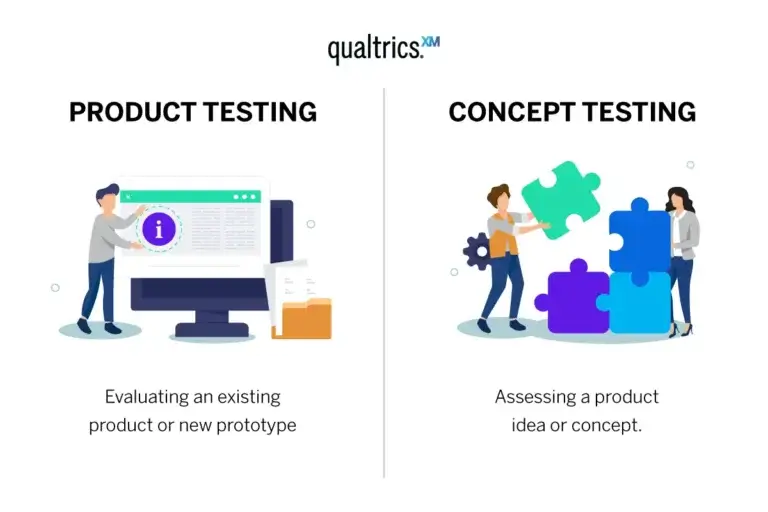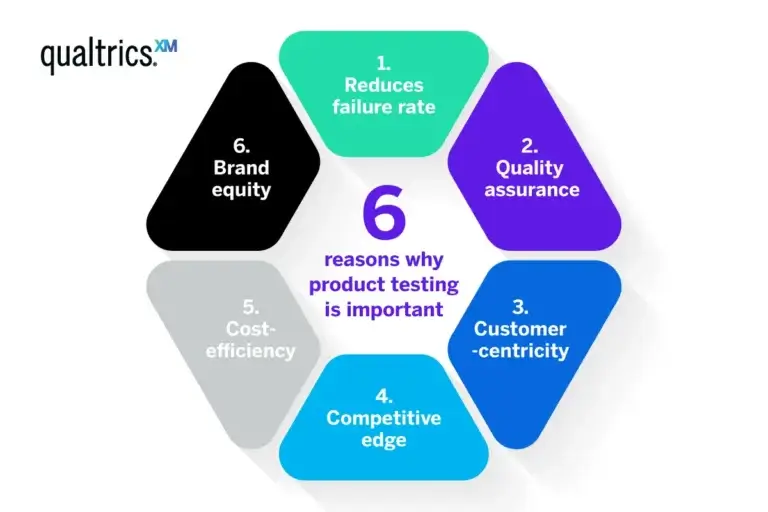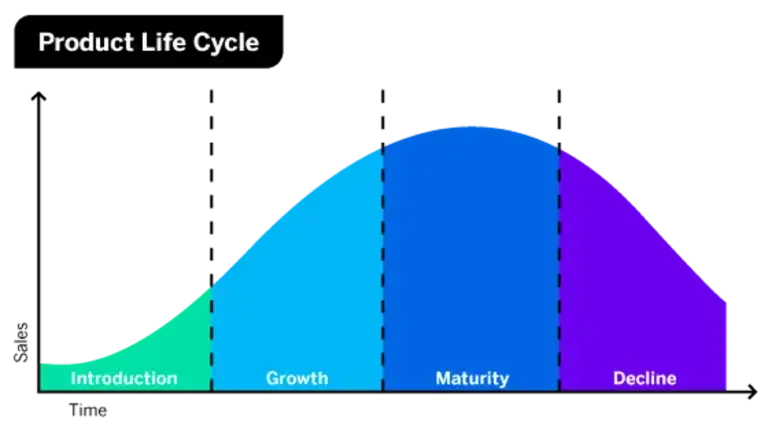Author: Will Webster
What is product testing?
Product testing is the evaluation of an existing product or a new prototype to assess key areas like performance, quality and functionality.
Depending on the stage your product is at in its lifecycle, product testing can have different goals. These include prototype refinement, tweaking new product prototypes based on test results to prepare for market launch, quality assurance, making sure the product meets quality standards and customer expectations, and competitive analysis, comparing your product against competitors to identify strengths and weaknesses.
Products are tested in two main ways: quantitatively and qualitatively. Quantitative testing involves using measurable metrics like speed, durability and error rates. Qualitative testing – often used for prototype testing – focuses on user experience, ease of use and overall design.
Request demo: Bring the voice of the user into every experience
Product testing vs. concept testing
Both part of the product development process, It’s easy to confuse product testing with concept testing. But they serve different purposes: while one deals with the tangible, the other explores the potential of an idea.
Product testing is all about evaluating an existing product or a new prototype. On the other hand, concept testing focuses on assessing a product idea or concept before any prototype is even developed.
While product testing aims to fine-tune actual products with your target market, concept testing is about gauging potential customer interest and willingness to buy.

Why is product testing important?
Nearly 30,000 new products are introduced each year, and a whopping 95% of them fail, according to Harvard Business School professor Clayton Christensen.
This fact alone underlines the critical importance of testing products. Done well, product testing is a vetting process that empowers brands to focus their efforts on creating and maintaining robust, market-ready products.
Here’s why product testing is so important:
- Reduces failure rate: The majority of products fail. But by identifying potential issues or market misalignments with your target audience early, businesses can avoid costly mistakes and instead focus on products with a higher likelihood of success.
- Quality assurance: Ensuring a product meets quality standards isn’t just about ticking boxes; it’s about customer satisfaction. A well-tested product minimizes the chance of returns and negative reviews, which in turn fosters trust and brand loyalty.
- Customer-centricity: By focusing on customer feedback, product testing will help your brand design something that truly meets real-world needs – creating a customer-centric approach that unites many of the world’s most successful brands.
- Competitive edge: Product testing can identify your product’s strengths and weaknesses in the marketplace, giving you the information you need to outperform competitors.
- Cost-efficiency: Discovering flaws early on can save incurring enormous costs – be them from recalls or complete product overhauls. By catching these issues in the testing phase, you’re saving both time and money in the long run.
- Brand equity: Rigorous product testing ensures that every product aligns with brand standards – and often creates an offering that sets new standards for your brand.

When to test a product
You now know what product testing is and why it’s so important. You’re probably now wondering when’s the best time to do it.
The answer is simple: product testing is relevant at all stages of the product lifecycle, from introduction to decline. However, the methodologies used can differ based on the stage you’re at.
For instance, guidance research can be crucial during the introduction phase, while A/B testing shines during the growth stage. As you hit product maturity, you’ll likely focus on product refinement and optimization tests. And even when a product is in decline, regression testing ensures it maintains its standard of quality.
No matter where you are in the product lifecycle, you can and should test.

How to test a product
When it comes to product testing, there are two major questions to address: who to test with and how to go about the testing.
It’s vital to understand the correct answers to both questions, because the right participants and the best-fit testing method will set the stage for valuable insights and, ultimately, a more successful product.
Who to test with
Many big-name companies, like Nike and Lululemon, use a variety of testers for their product testing programs – ranging from employees and customers to custom panel members.
However, most often a third-party panel sample is used by brands through product testing programs, allowing for a broader range of unbiased opinions from product testers.
More recently, product testing sites have become a very popular way to achieve convenient and cost effective product testing with a large sample. Especially for brands selling digital products, using a product testing site is now almost a non-negotiable – with many of the best product testing companies unlocking consumer testing with your target market. In some cases, it’s all only in exchange for free products or access.
How to test
The two primary methods of conducting product tests are Central Location Tests (CLT) and In-Home Use Tests (IHUT or HUT).
Central Location Tests (CLT)
Here participants use the product in a controlled environment, like a lab, research facility or simply in the brand’s HQ. CLTs are ideal for expensive or sensitive prototypes, and typically collect data through a survey, observation or focus group.
Pros: The controlled environment means fewer variables, allowing for more precise data collection. This is particularly useful for protecting intellectual property or costly prototypes.
Cons: The downside is that these settings can feel artificial and might not reflect how the product is used in the real world, potentially skewing your results.
In-Home Use Test (IHUT)
In this approach, a product tester will use the product at home, providing feedback via surveys or qualitative methods. Diary studies are often also used for tracking longer-term use.
Pros: Testing in a natural setting can provide more authentic data and can reveal how the product fits into people’s daily lives.
Cons: An uncontrolled environment can introduce new, unforeseen variables, which could make the data less consistent. This method may also be impractical for expensive or hard-to-produce prototypes.
The importance of ethical product testing
Ethics should never be an afterthought in product testing.
Gaining informed consent from participants is crucial, ensuring they fully understand what the test involves and how their data will be used. Once their input is collected, secure handling and storage of collected data should be a top priority to protect privacy.
You should always adhere to relevant legal guidelines and ethical standards to maintain the integrity of your product testing process.
Types of product test
Knowing which type of product test to use is essential for tailoring your approach to each stage of your product’s life cycle. Let’s dive into some of the most common ways to test products.
Guidance research
Guidance research is often your starting point in product testing – suitable for both early and later stages of development.
This approach focuses on assessing the overall feasibility of a new product by screening prototypes to measure consumer acceptance. It also provides a way to identify areas where optimization can improve the product.
Common methods for guidance research include surveys, as well as moderated and unmoderated qualitative methods. Sometimes, user experience research (UXR) methods are used to provide more nuanced insights.
A/B testing
A/B testing is a form of comparative testing that’s ideal for making design decisions.
Here you’re comparing two or more versions of a product feature to see which one resonates more with consumers, with participants typically randomly allocated to different testing groups and asked to interact with the different versions.
There are two main styles of A/B testing: Monadic and Sequential Monadic. In Monadic tests, each respondent only interacts with one version of the product. Sequential Monadic tests have participants experience both versions, just in a different order.
With A/B testing, it’s important to have a sufficiently large sample size to ensure that your findings are statistically significant.
Product refinement and optimization
As your product evolves, product refinement and optimization come into play. This form of testing is all about fine-tuning the attributes, features and benefits of your existing product to maximize its impact.
Surveys and qualitative methods are often used in product refinement and optimization. And like in guidance research, UXR techniques can be particularly helpful here.
Regression testing
Last but not least, if you’re dealing with digital products in particular, regression testing is critical.
The focus here is to ensure that introducing new features doesn’t compromise existing functionality. Essentially, every time you update or add something new, you’ll want to run regression tests to confirm that you didn’t break anything that was already working well.
How long does product testing take?
Sadly there isn’t a straightforward answer to this question.
The duration of a product test can vary widely depending on several factors, including the complexity of the product, the depth of the insights you’re after, who you’re mining insights from and the testing method used. Central Location Tests (CLT) might take only a day or two if they’re conducted in a controlled environment, while In-Home Use Tests (IHUT) can span weeks, especially if diary studies are involved.
It’s all about finding the right balance between thoroughness and efficiency. So, while there’s no one-size-fits-all answer, planning and scoping out your test in advance can help you estimate the time needed more accurately.
Product pricing and product testing
Pricing strategy is a complex but crucial aspect of the product development and optimization process.
While the primary focus of product testing often rests on assessing key themes like quality, features and user experience, understanding how much consumers are willing to pay for your product is essential. You could build a product that ticks every box within those three key areas, but if the price is wrong for your target market, the brilliance of your product matters little.
It’s a very good idea to integrate price testing into your standard product testing – particularly when you’re assessing new features that you hope will add value to your product and justify price increases. If users love the features but balk at the price, you’ve got a mismatch that could spell trouble.
Remember, it’s not just about what consumers are willing to pay but also how the price influences their perception and experience of the product.
Ready to elevate your product testing game?
Look no further. Qualtrics is your all-in-one solution for turning user feedback into actionable insights at every stage of your product’s lifecycle.
With our UX research software, you can tap into a wealth of qualitative and quantitative research tools, from user interviews to card sorts – all designed by experts and powered by AI.
Get instant access to diverse audiences: With Qualtrics, you can easily segment and engage the right users for your product tests. This means richer, more targeted UX research and tailored interactions every time.
Data-driven decisions with best-in-class analytics: Our platform offers advanced analytics with machine learning capabilities, making it a breeze to identify key insights and sentiment about your product.
Automate and scale: Save time and reduce errors with pre-made surveys, automated projects and even auto-generated reports that help you close product experience gaps at scale.
Expert support: With Qualtrics Research Services you gain leading assistance, letting you choose how hands-on you want to be in gathering deeper, more targeted data.
Ready to unlock the full potential of your product? Book a UX research demo with us today.